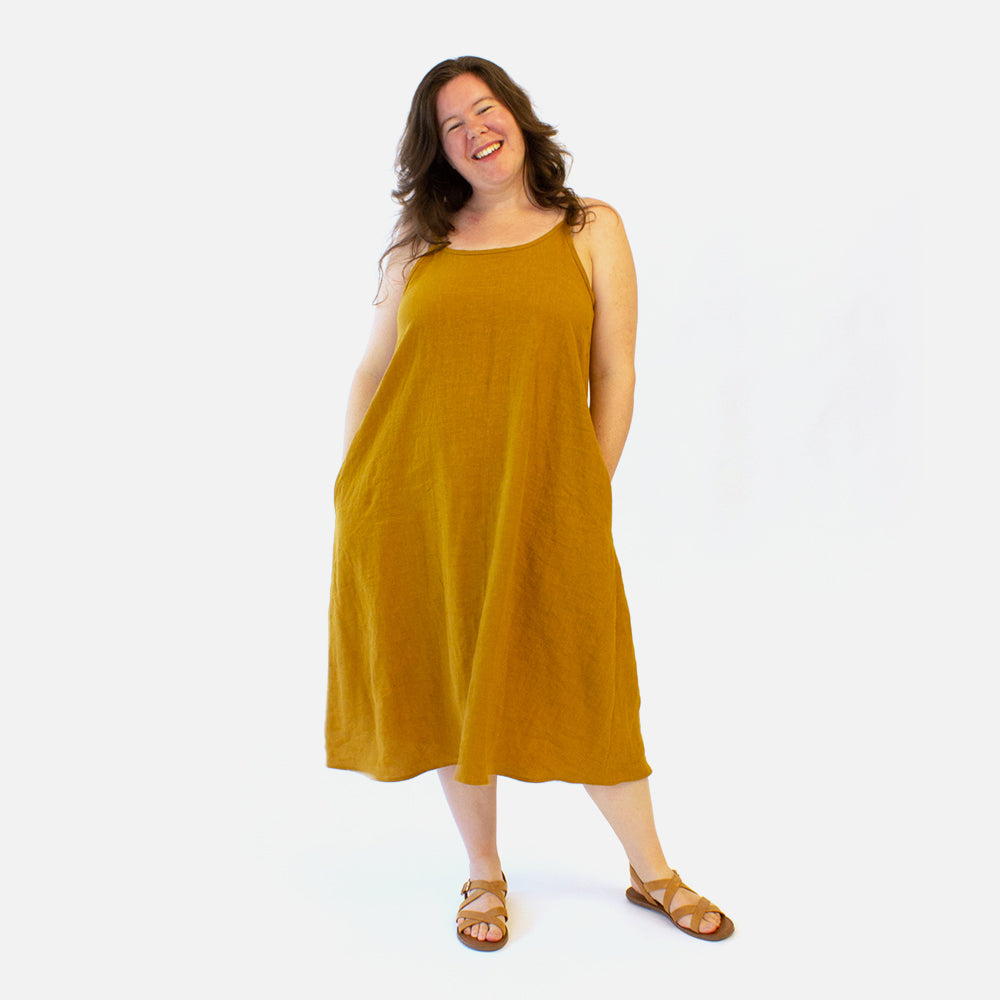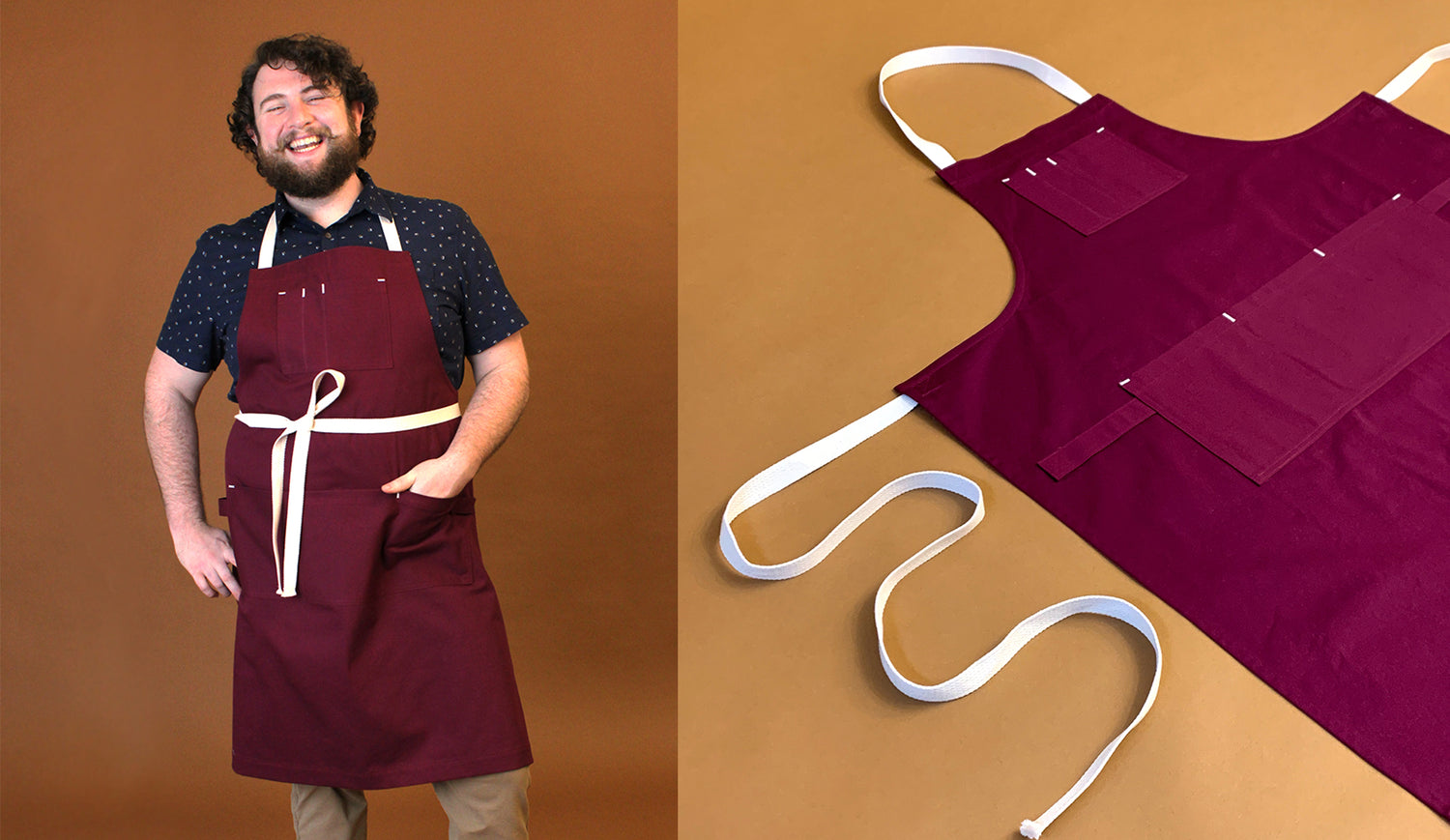Hi everyone! Chloe here. I am back again with another sustainable scrap-busting project for you- sewing a sleep mask! Scrap-busting uses up those little bits of fabric that are left over from bigger projects; it helps us sewists to be more sustainable and have fun doing it! Click here if you want to catch up on previous sustainable scrap-busting posts.

Sleep masks are wonderful for several reasons. First off, wearing one makes you feel like Holly Golightly in Breakfast at Tiffany's. They are also perfect for blocking light when you want to get a good night's sleep in summertime. I really like to have one with me when I fly, especially for long-haul or overnight flights. Sewing your own sleep mask ensures an adorable mask that will make everyone around you envious.
I made two sleep masks. The first one is made of floral print cotton, with store-bought double-fold bias tape and an exposed elastic strap. The second mask is made from a linen-cotton blend, with a quilted mask and scrunchie-style strap. I'll explain how to make both kinds in this post.
This is an excellent scrap buster not only for small bits of fabric but those leftover pieces of bias binding and elastic, too!
We've made a template for you to make your own sleep mask! You can download it for free below.

For this tutorial you will need:
-Two scraps of your choice, at least 8 inches wide and 4 inches long.
-Cotton quilting batting
-An elastic scrap for the strap, cut to be comfortable around the back of your head from temple to temple
-Sewing scissors or a rotary cutter
-A quilting ruler (for the quilted mask)
-A chalk pen (for the quilted mask)
-A fabric scrap around 30" long and 4" wide (for the scrunchie-style strap on the quilted mask)
Let's get started!
For each mask, you will cut out two pieces of fabric in the shape of the sleep mask template, and one piece of cotton batting.



Sandwich the batting between the two scraps, with the right sides of the fabric facing outward. Pin in place.

If you're making the non-quilted version with the exposed elastic strap, you can skip the next few steps.
If you want to quilt your eye mask, it can be helpful to mark where you're going to sew your quilting lines. I marked diagonal lines 1" apart at a 45-degree angle using my quilting ruler to make a cross-hatch pattern.



Once your quilting lines are marked, sew down each line using a straight stitch until your mask is quilted.

Next, we will make the scrunchie-style casing for the elastic strap. Take your strip of fabric and fold it in half lengthwise and press. Pin in place. Sew down the exposed edges of the strip at 1/4". Using a safety pin, turn the casing right-side out. Then, using a safety pin again, guide the elastic through the casing. Pin the opposite end of the elastic to the end of the fabric casing so you don't pull the elastic all the way through. Once you've successfully fed your elastic through the casing, pin and sew each end at 1/4" to secure.




If you're making the non-quilted version, you can continue here.
Sew all around the perimeter of your mask at 1/4".

Pin the ends of the elastic strap to the front of your mask with raw edges together and sew at 1/4" to secure. We are going to bind this edge, so we need the ends of the strap to line up with the edge of the mask.

Our mask is starting to come together! We just have to apply bias binding to the outside. You can use homemade or store-bought double-fold bias tape. For my blue mask, I used store-bought double-fold tape. For detailed instructions, read our previous posts on how to make homemade bias tape and how to sew a bias facing.
Store-bought bias tape has one side that is slightly shorter than the other. If you're using store-bought tape, align this shorter edge with the edge of your mask. Pin your bias tape around the perimeter of your mask. Leave an overlap of tape, and then sew the two ends of the tape together, trim, and press open.


Next, stitch in the first fold of your bias tape all around the edge of your eye mask.
Fold your bias tape around to the back of your mask so that the tape encloses all the raw edges of the mask. The raw edge of the elastic strap will also be enclosed once you sandwich your tape around the mask. Pin in place.

You have two options for sewing the bias tape in place.
1. You can topstitch through all layers of tape and the mask.
2. You can 'stitch in the ditch' of the bias tape from the front of the mask, catching the other side of the bias tape by 1/8" on the back. Remember how I explained that one edge of the store-bought tape is slightly shorter? Because of that difference, the tape extends slightly further on the backside of the mask, and so when we "stitch in the ditch", we grab the edge of the bias tape on the backside of the mask.
Helpful resource: Learning Curves: A Guide to Bias Binding, by Brooks Ann Camper. Seamwork Magazine.

Once you've stitched your bias tape, you're finished! You now have an adorable sleep mask that will help you get a great night's sleep no matter where you are. It also makes a great gift for a loved one!

As always, let us know in the comments if you have any questions!






